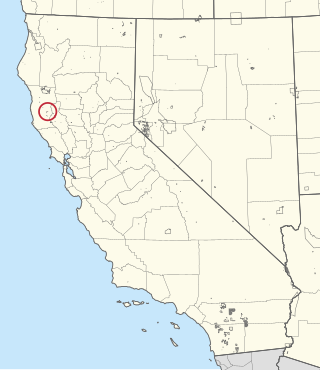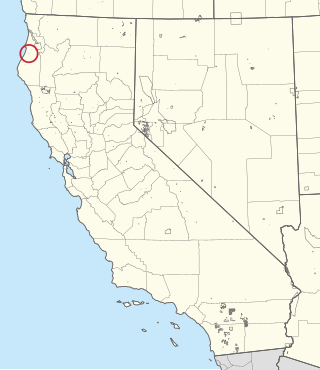Related Research Articles

The Maidu are a Native American people of northern California. They reside in the central Sierra Nevada, in the watershed area of the Feather and American Rivers and in Humbug Valley. In Maiduan languages, maidu means "man".
The Shingle Springs Band of Miwok Indians, Shingle Springs Rancheria, California is a federally recognized tribe.

The Nisenan are a group of Native Americans and an Indigenous people of California from the Yuba River and American River watersheds in Northern California and the California Central Valley. The Nisenan people are classified as part of the larger group of Native Americans known as the Maidu, though some dispute the accuracy of this relationship. They have been delineated by their geographical location, and so in many texts they are further subcategorized as the Valley Nisenan, Hill Nisenan, and Mountain Nisenan.

The United Auburn Indian Community (UAIC) is a federally recognized Native America tribe consisting mostly of Miwok Indians indigenous to the Sacramento Valley region.
Indian termination is a phrase describing United States policies relating to Native Americans from the mid-1940s to the mid-1960s. It was shaped by a series of laws and practices with the intent of assimilating Native Americans into mainstream American society. Cultural assimilation of Native Americans was not new; the belief that indigenous people should abandon their traditional lives and become what the government considers "civilized" had been the basis of policy for centuries. What was new, however, was the sense of urgency that, with or without consent, tribes must be terminated and begin to live "as Americans." To that end, Congress set about ending the special relationship between tribes and the federal government.
The Graton Rancheria was a 15.45-acre (62,500 m2) property in the coastal hills of northern California, about two miles (3 km) northwest of Sebastopol. The site is about 1.5 miles (2.4 km) southwest of the hamlet of Graton, population 1,815 in 2000. The area is a few miles west of Santa Rosa, the largest of Sonoma County's nine cities and the County seat, population 147,595 in 2000. It was a former rancheria for Central Coast and Central valley tribes, including the Southern Pomo, a Hokan-speaking tribe, and Coast Miwok.
The Buena Vista Rancheria of Me-Wuk Indians of California is a federally recognized tribe of Miwok in Amador County, California. The Buena Vista Miwok are Sierra Miwok, an indigenous people of California.

The Redwood Valley Rancheria is a federally recognized Indian tribe located in Redwood Valley, Mendocino County, California. The tribe is primarily composed of Pomo Indians. Redwood Valley Rancheria is a sovereign Indian tribe with the powers of self-governance.
The Big Sandy Rancheria of Mono Indians of California is a ranchería and federally recognized tribe of Western Mono Indians (Monache) located in Fresno County, California, United States. As of the 2010 Census the population was 118. In 1909, the Bureau of Indian Affairs (BIA) bought 280 acres of land for the Big Sandy Band of Western Mono Indians.

The Blue Lake Rancheria of the Wiyot, Yurok, and Hupa Indians is located northwest of the city of Blue Lake in Humboldt County, California on approximately 76 acres (0.31 km2). As of 2007, there were 53 enrolled members. As of the 2010 Census the population of Blue Lake Rancheria was 58.

The Elk Valley Rancheria is a ranchería and federally recognized tribe of Tolowa and Yurok people. It is located in the census-designated place of Bertsch-Oceanview, Del Norte County, California, just east of Crescent City. As of the 2010 Census, the population was 99.
The Advisory Council on California Indian Policy (ACCIP) was created by an act of the United States Congress and signed by President George H. W. Bush on October 14, 1992. It provided for the creation of a special advisory council made up of eighteen members with the purpose of studying the unique problems that California Native Americans face in receiving federal acknowledgment. Additionally, they were given the task of studying the social and economic conditions of California natives, “characterized by, among other things, alcohol and substance abuse, critical health problems, family violence and child abuse, lack of educational and employment opportunities, and significant barriers to tribal economic development.” Under the provisions for the act, the Advisory Council was to make recommendations regarding California Indian policy to the Congress and the Departments of the Interior and of Health and Human Services.
The Cloverdale Rancheria of Pomo Indians of California is a federally recognized tribe of Pomo Indians in California. The tribe is currently considered "landless", as they do not have any land that is in Federal Trust. In 2008 they acquired approximately 80 acres (32 ha) of property on the southern end of Cloverdale, California. The property is currently going through the Fee to Trust process to become the tribe's landbase.

Wilton Rancheria is a federally recognized Native American tribe of Miwok people based in northern California. They were formed from Wilton Rancheria Miwok and the Me-Wuk Indian Community of the Wilton Rancheria. It regained recognition in 2009.
The Koi Nation of the Lower Lake Rancheria is a federally recognized tribe of Southeastern Pomo people in northern California. Their name for their tribe is Koi Nation of Northern California, from their traditional village, Koi, once located on an island in Clear Lake.
Tillie Hardwick was a Pomo Indian woman who was instrumental in reversing the California Indian Rancheria termination policy of the U.S. government.
The California Rancheria Termination Acts refer to three acts of Congress and an amendment passed in the 1950s and 1960s as part of the US Indian termination policy. The three Acts, passed in 1956, 1957, and 1958 targeted 41 Rancherias for termination. An additional seven were added via an amendment in 1964. Including three previous terminations, 46 of the 51 targeted Rancherias were successfully terminated. Through litigation and legislation, over 30 Rancherias have been restored and at least five are still working to be.
References
- 1 2 The Indigenous People of the Sierra Nevada’s Foothills are Nisenan
- ↑ A Second Century of Dishonor : Federal Inequities and California Tribes; aisc.ucla.edu; A report prepared by the UCLA American Indian Studies Center, 1996
- ↑ "NISENAN MAIDU TRIBE OF THE NEVADA CITY RANCHERIA, Plaintiff, v. KEN SALAZAR, et. al., Defendants" (PDF). 2011. Retrieved 13 May 2018.
- ↑ Greater Cement Hill Neighborhood Association Newsletter, Winter 2011